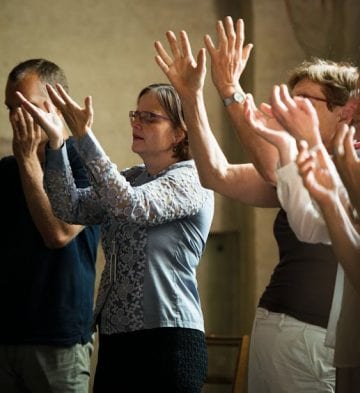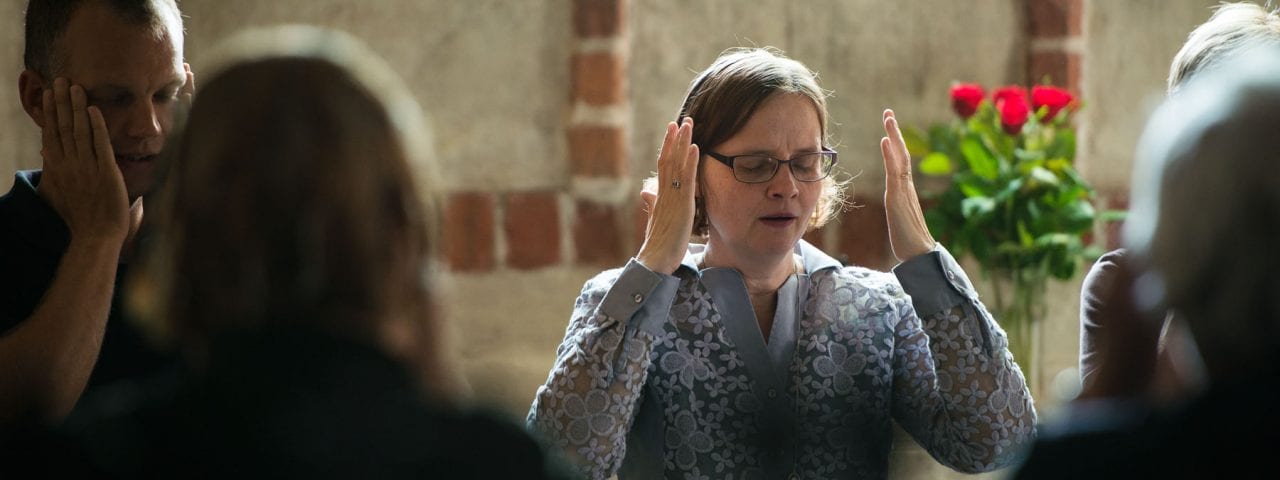Chanting Laboratory
The Chanting Laboratory was one of the activities of the project Touching, Tasting, Hearing, Seeing and Smelling. Sensory Experiences in the Feasts of St Thomas Aquinas. In the Chanting Laboratory, the project sought to achieve a grasp of a possible sensorial experience of medieval people. The Laboratory included an experimental and artistic part, in which the audience, ‘ the Everyman’, was able to experience bodily, by chanting, hearing, smelling and tasting, the memory of the saint in the guidance of the Vox Silentii duo and the investigators of the project. In 2015–2018, the investigators provided chanting workshops in schools, congregations, conferences and at public events, and they have also given open lectures on the subject.
The investigators has published several texts in relation to the activity of the Chanting Laboratory (you can find more information in Finnish here). Participants’ feedback has had a substantial role in the analysis of the peer-reviewed article Keskiaikainen liturgia elettynä ja koettuna (Tunteet, aistit ja uskonnollinen kokemus. Kirkkohistoriallisen seuran vuosikirja 2019 – find the abstract in English below)

Abstract for the Finnish article Keskiaikainen liturgia elettynä ja koettuna, authors M. Räsänen, H-L. Vuori, J. Korhonen and S. Heikkinen – Medieval liturgy as lived emotions
This paper addresses the images and emotions stimulated by medieval liturgy, as well as their role as a verbal and musical medium, namely, sonic hagiogra- phy. We examine the topic in relation to two historical frames: on one hand, the medieval Dominican community where our liturgical sources originated; on the other, the workshops on medieval chant that we organized in 2015 and 2016. This discussion aims at a manysided study of a researcher’s means of interpreting the past, while also addressing the interpretation of medieval imagery as informed by the background of the present, utilizing the subjective experiences of a modern listener.
Our medieval research material consists of the musical notation and texts of the liturgical chants dedicated to the Dominican Saint Thomas Aquinas (1224/5–1274). The extant memorial chants of Thomas (including their music and lyrics) and their contextualization in our knowledge of Dominican litur- gy provide our analysis on the function of medieval music with an important frame of reference. In analyzing the material collected in our workshops (descriptions of participants’ thoughts and emotions), we have been guided by theories of modality, acoustic feeling and phenomenology.
This study focuses, above all, on the body: the living and dead body of Thomas, his relics, and the bodies of the medieval and modern singers who performed liturgical chants that describe the physicality of Thomas Aquinas. The structure of the article moves between medieval and modern contexts as we observe the sensory impressions created by music in the Middle Ages and the modern world on occasions when their respective singers have participated corporally in the offices of Thomas Aquinas by singing and listening.
The material collected in our workshops is largely similar, regardless of the participants’ age, education and other background factors. This is an indicator of the general uniformity of the human auditory experience. A singer’s personal voice in his or her own body can produce experiences that connect to the atmosphere of medieval chant and its singers.
